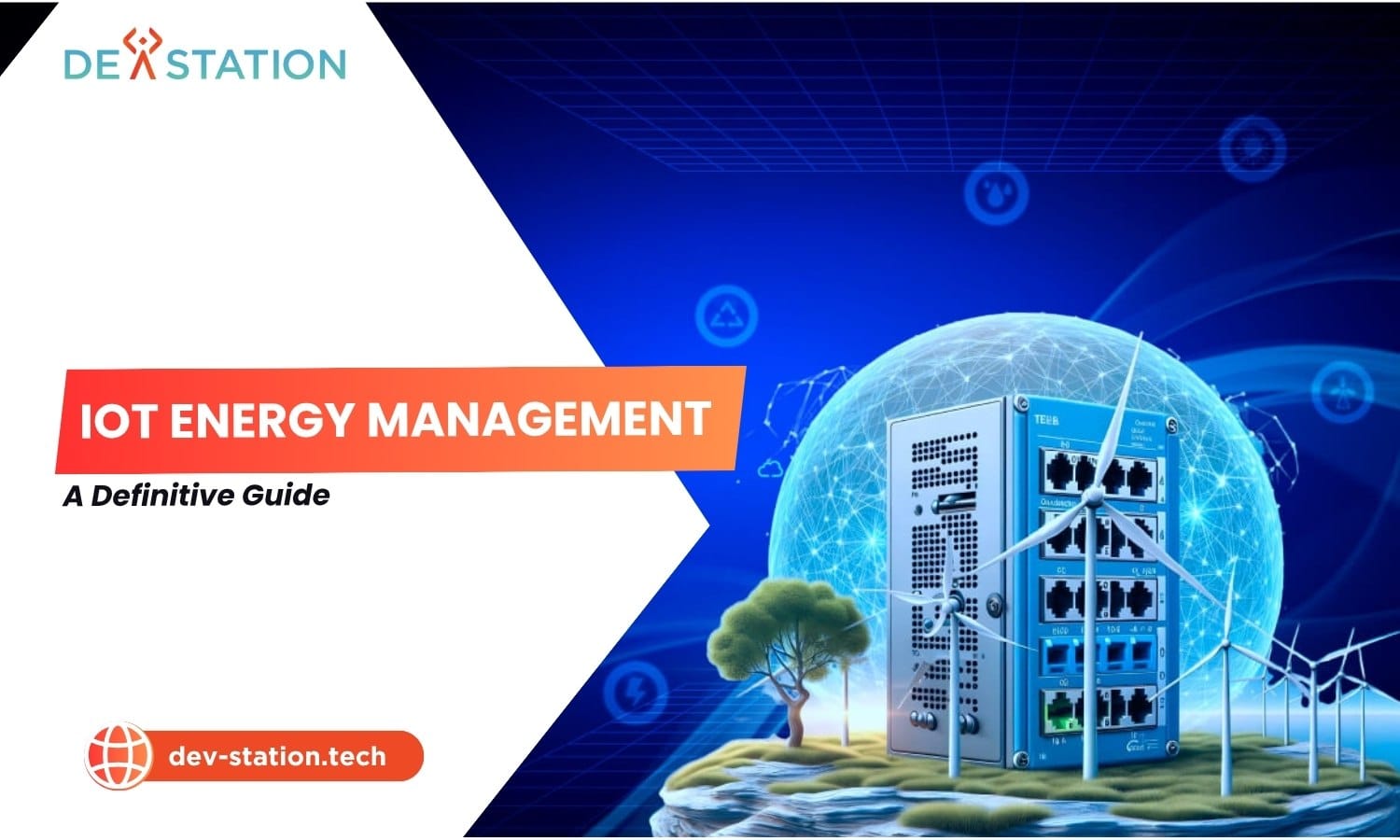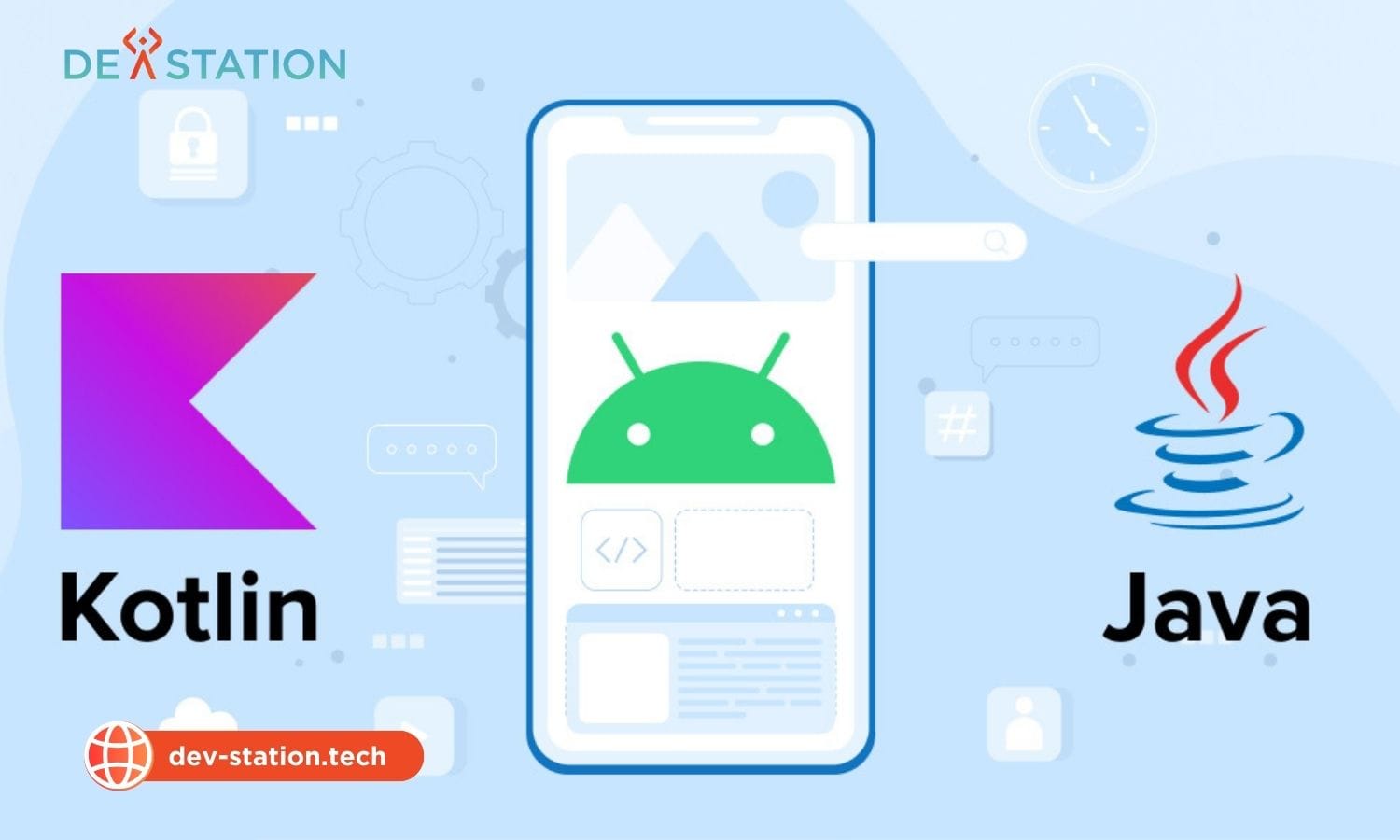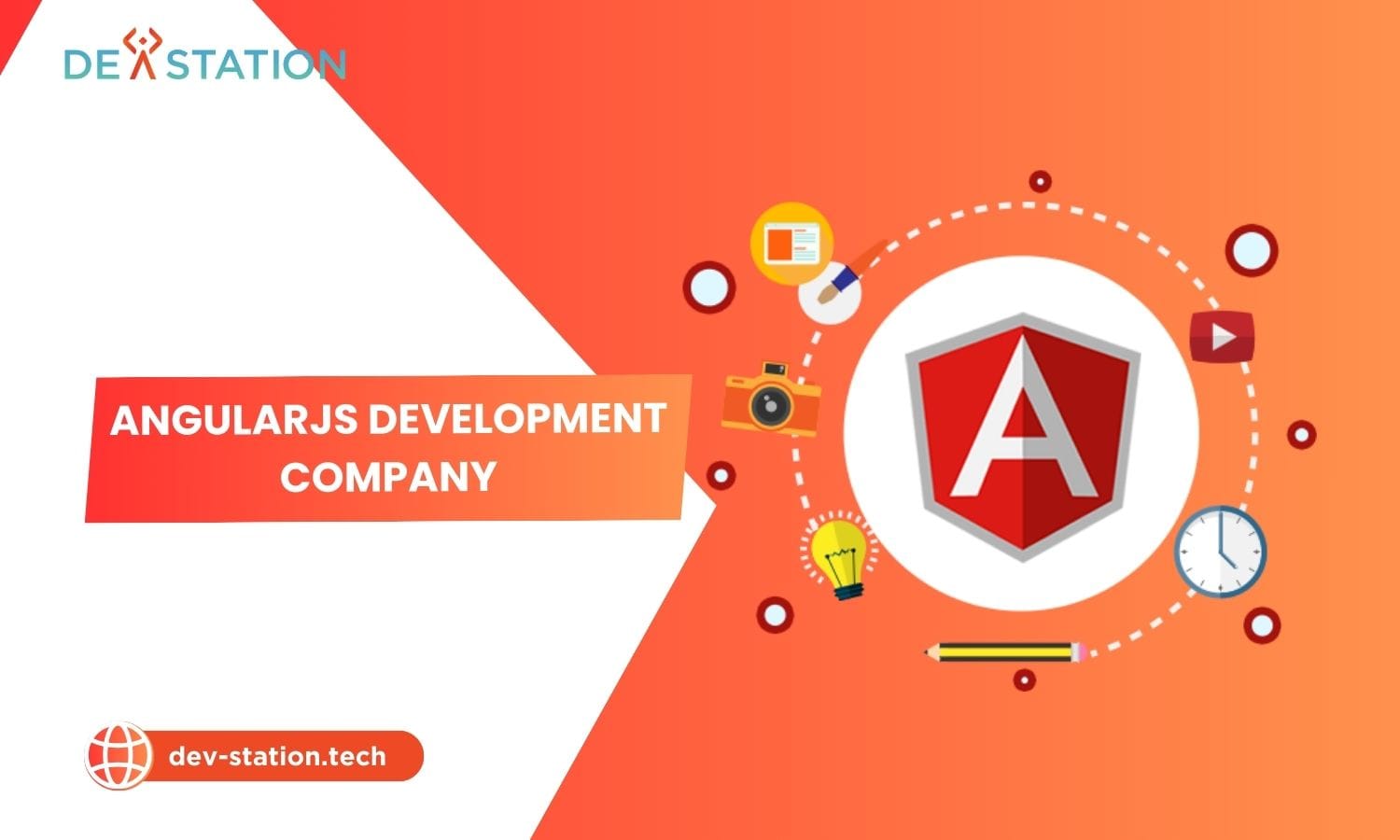IoT energy management in manufacturing unlocks significant operational savings by connecting machinery and providing real-time data for intelligent power consumption. Dev Station Technology helps factories harness this data to slash utility costs, reduce their carbon footprint, and boost overall plant productivity. Explore smart manufacturing power management, industrial energy efficiency, and sustainable operations.
Contents
ToggleHow Does The Internet of Things Enable Comprehensive Energy Optimization?
IoT enables energy optimization by deploying a network of sensors to monitor equipment in real time, using data analytics to identify waste, and automating controls to ensure machinery consumes the minimum power necessary for optimal performance. This data-driven approach transforms energy from an uncontrollable overhead into a manageable asset.
The Internet of Things, or IoT, creates a digital nervous system across a factory floor. This system is built on three foundational pillars that work together to deliver significant energy savings and operational intelligence.
First is granular monitoring. Traditional energy management relies on a single utility meter for the entire facility, offering a monthly overview that reveals little about specific sources of waste. IoT introduces submetering, where smart sensors are attached to individual machines, production lines, and systems like HVAC and lighting. These sensors capture high-frequency data on voltage, current, power factor, and consumption, providing an unprecedented level of visibility. According to the International Energy Agency (IEA), digital solutions like these can improve industrial energy efficiency by up to 30%. With this data, managers can finally see exactly when, where, and why energy is being consumed, moving from guesswork to data-backed certainty.
Second is advanced analytics and anomaly detection. Raw data alone is not enough. IoT platforms ingest this continuous stream of information and apply powerful analytics and machine learning algorithms. These platforms can automatically establish baseline energy consumption patterns for every piece of equipment under various operating conditions. When a machine deviates from this baseline, such as consuming more power than usual for a specific task, the system flags it as an anomaly. This could indicate a need for maintenance, a sign of mechanical wear, or an inefficient operational setting. This proactive approach is a cornerstone of predictive maintenance with IoT, preventing costly failures and sustained energy waste.
Third is intelligent automation and control. Once insights are generated, IoT enables automated action. Instead of relying on manual adjustments, an IoT-powered Energy Management System (EMS) can execute control strategies automatically. For example, it can dim lights in unoccupied areas, adjust HVAC setpoints based on real-time occupancy and weather forecasts, or power down non-essential machinery during periods of peak energy pricing. This automated control ensures that energy-saving policies are enforced consistently, 24/7, without human intervention, maximizing efficiency and minimizing human error.
What Are The Biggest Energy Challenges In Modern Manufacturing?
The biggest energy challenges in manufacturing are high operational costs from inefficient machinery, a lack of visibility into real-time consumption patterns, and the difficulty of balancing production targets with growing pressures to meet sustainability goals and reduce carbon emissions. These issues create significant financial and regulatory risks.
Manufacturing is an energy-intensive sector, accounting for over 50% of global energy consumption. For many facilities, energy is one of the top three operating expenses, directly impacting profitability. The primary challenge stems from complex production environments where energy waste often goes unnoticed. Key issues include:
- Aging and Inefficient Equipment: Older motors, pumps, and compressed air systems can consume significantly more energy than their modern counterparts. Without precise monitoring, it is difficult to build a business case for upgrading equipment, as the exact financial impact of the inefficiency is unknown.
- Lack of Granular Visibility: Most factory managers only see a single utility bill at the end of the month. This makes it impossible to pinpoint which specific machines or processes are the biggest energy consumers or to identify abnormal consumption spikes in real time.
- Idle and Standby Power Waste: A significant portion of industrial energy waste occurs when machines are left idling between production runs or on standby overnight. Studies have shown this can account for up to 15% of a factory’s total energy use.
- Peak Demand Charges: Utilities often impose heavy charges based on the highest peak of electricity usage during a billing cycle. Without a system to monitor and manage these peaks, factories can incur substantial and often avoidable costs.
What Are The Top IoT Use Cases For Factory Energy Savings?
The top IoT use cases for energy savings include smart motor management to match output with load, intelligent HVAC and compressed air system control based on real-time demand, and automated lighting systems that respond to occupancy and natural light levels. These applications often deliver the fastest return on investment.
By applying IoT principles, factories can target the largest sources of energy consumption with precision. Dev Station Technology focuses on implementing practical solutions that deliver measurable results. Here are three high-impact use cases.
How Can You Optimize Industrial Motor Control?
You can optimize industrial motors by using IoT sensors to monitor their load and power consumption in real time, then using Variable Frequency Drives (VFDs) to automatically adjust the motor’s speed to precisely match the required workload. This process can reduce a motor’s energy consumption by up to 60%.
Industrial motors used in pumps, fans, and conveyors are massive energy consumers. Many operate at a fixed, maximum speed regardless of the actual load requirement. By retrofitting motors with IoT sensors and VFDs, factories can achieve dynamic control. For example, a conveyor belt motor can be slowed down automatically when fewer items are on the line, or a pump motor can adjust its speed based on fluid demand. The U.S. Department of Energy estimates that optimizing motor systems could save 60 billion kilowatt-hours of electricity annually. Dev Station Technology’s solutions enable this level of control, turning fixed-speed motors into intelligent, energy-efficient assets.
How Does IoT Improve HVAC and Compressed Air Systems?
IoT improves these systems by using sensors to monitor temperature, humidity, and air pressure across the facility. This data allows for the automated control of chillers and compressors, ensuring they only operate when and where needed, and at the most efficient levels, while also detecting costly air leaks.
HVAC systems and compressed air generation are often the two largest energy loads in a factory after production machinery. IoT sensors placed throughout a facility provide a detailed thermal and pressure map. This allows the Building Management System (BMS) to move beyond simple timers and create dynamic zones. For example, the system can reduce heating in a warehouse section on a warm day or lower airflow in an office area after hours. For compressed air, IoT pressure sensors can instantly detect leaks, which can account for 20-30% of a compressor’s output. By fixing leaks and matching compressor output to real-time demand, facilities can achieve energy savings of 20-50% in this area alone.
What Role Does Smart Lighting Play?
Smart lighting uses IoT-connected LED fixtures with occupancy and daylight sensors. This allows the system to automatically dim or turn off lights in empty areas and adjust artificial lighting based on the amount of natural light available, potentially cutting lighting-related energy costs by up to 90%.
Lighting can represent a significant portion of a factory’s electricity bill, especially in 24/7 operations. The move to LED lighting was the first step in efficiency. The next leap is intelligent control through IoT in manufacturing. Occupancy sensors ensure that no energy is wasted lighting empty corridors or storage areas. Daylight harvesting sensors measure the amount of natural light entering through windows and skylights and automatically dim the electric lights to maintain a constant, optimal light level. These systems not only save energy but also improve the working environment for employees and extend the lifespan of lighting fixtures.
How Can IoT Help Your Company Achieve Its Sustainability And ESG Goals?
IoT directly supports sustainability and ESG (Environmental, Social, and Governance) goals by providing the accurate, verifiable data needed to measure, manage, and report on energy consumption and carbon emissions. This data is essential for tracking progress against reduction targets and demonstrating corporate responsibility.
Today, investors, customers, and regulators demand that companies demonstrate a clear commitment to sustainability. Vague promises are no longer sufficient; verifiable data is required. This is where the power of the industrial IoT in manufacturing truly shines.
By continuously monitoring energy consumption from electricity, gas, and water, an IoT platform can automatically calculate and track a factory’s carbon footprint in real time. This data can be used to generate automated reports for frameworks like the Global Reporting Initiative (GRI) or for compliance with standards such as ISO 50001. The insights from real-time production monitoring with IoT enable managers to set realistic reduction targets and prove that they are meeting them. For example, a company can set a goal to reduce energy intensity (energy per unit of production) by 15% over two years and use the IoT system to track progress month by month, correlating energy use directly with production volume. This level of transparency builds trust with stakeholders and strengthens a company’s brand reputation.
| Metric | Traditional Method | IoT-Enabled Method |
|---|---|---|
| Data Frequency | Monthly (Utility Bill) | Real-Time (Seconds/Minutes) |
| Data Granularity | Entire Facility | Per Machine / Line / Zone |
| Waste Identification | Manual Audits (Periodic) | Automated Anomaly Alerts |
| Reporting | Manual Spreadsheet Entry | Automated ESG Reports |
What Are The Essential Solutions And Tools For IoT Energy Management?
The essential tools include hardware like smart sensors and gateways, a central IoT platform for data aggregation and analytics, and software such as an Energy Management System (EMS) or Building Management System (BMS) for visualization and control. AI-powered forecasting models are also becoming critical for advanced optimization.
Implementing a successful IoT energy management strategy requires a combination of hardware, software, and platforms. At Dev Station Technology, we help you navigate these choices to build a cohesive and effective system.
- Smart Sensors and Meters: These are the foundational hardware components. They include current transformers (CTs) for electrical panels, plug-and-play sensors for individual machines, and environmental sensors for temperature, humidity, and occupancy.
- IoT Gateways: Gateways are devices that securely collect data from multiple sensors on the factory floor and transmit it to the central cloud platform. They act as the bridge between the Operational Technology (OT) on-site and the Information Technology (IT) in the cloud.
- IoT Cloud Platform: This is the central brain of the operation. The platform securely ingests, stores, and processes the vast amounts of data from the sensors. It runs the analytics, hosts the machine learning models, and provides the APIs for other software to connect to. The use of a digital twin in manufacturing on these platforms can further enhance simulations.
- Energy Management Software (EMS): This is the user-facing application. The EMS provides dashboards, charts, and reports that allow managers to visualize energy consumption, track KPIs, and analyze trends. This is often integrated with tools for IoT supply chain visibility in manufacturing to connect energy use to logistics.
- AI and Machine Learning Models: Advanced systems use AI for predictive forecasting. By analyzing historical consumption data alongside production schedules and weather forecasts, these models can predict future energy demand. This allows factories to optimize energy procurement and avoid peak demand charges. This ties into the broader concept of AI vision for quality control in manufacturing, where intelligence drives efficiency.
How Can You Get Started With IoT Energy Management?
You can start by conducting an energy audit to identify key consumption areas, followed by a small-scale pilot project targeting a single high-impact area like a production line or HVAC system. This allows you to prove the ROI and gain experience before scaling the solution across the entire facility.
Adopting a full-scale IoT energy management system can seem daunting. A phased, strategic approach is the most effective way to ensure success. Dev Station Technology recommends a clear, four-step process:
Step 1: Audit and Identify Opportunities. Begin by analyzing your current energy bills and walking the factory floor to identify the most energy-intensive equipment and processes. This initial assessment helps you prioritize where to focus your efforts for the quickest and largest returns. The goal is to find the low-hanging fruit.
Step 2: Launch a Pilot Project. Do not try to solve everything at once. Select a single, well-defined area for a pilot project. This could be monitoring the compressed air system, a single CNC machine, or the lighting in one section of the warehouse. This pilot will help you test the technology, validate the potential savings, and build a strong business case for a wider rollout.
Step 3: Choose the Right Technology Partner. Select a partner who understands both the operational realities of manufacturing and the technical complexities of IoT. Your partner should help you choose the right sensors, gateway, and platform for your specific needs. Look for a partner like Dev Station Technology that offers a complete solution from strategy to implementation and ongoing support.
Step 4: Scale and Integrate. Once your pilot project has proven successful, you can develop a roadmap to scale the solution across other areas of your facility. At this stage, you should also focus on integrating the energy data with other business systems, like your ERP or MES. This links energy consumption directly to production metrics, allowing you to calculate energy cost per unit and other critical KPIs for your smart energy initiatives.
Ready to transform your factory’s energy consumption from an uncontrollable expense into a strategic advantage? Take the first step towards a more efficient, sustainable, and profitable future.
Learn more about how Dev Station Technology can help you implement these solutions. Contact us today to schedule a consultation and discover the power of IoT for your manufacturing operations. Visit our website at dev-station.tech or email us directly at sale@dev-station.tech.





